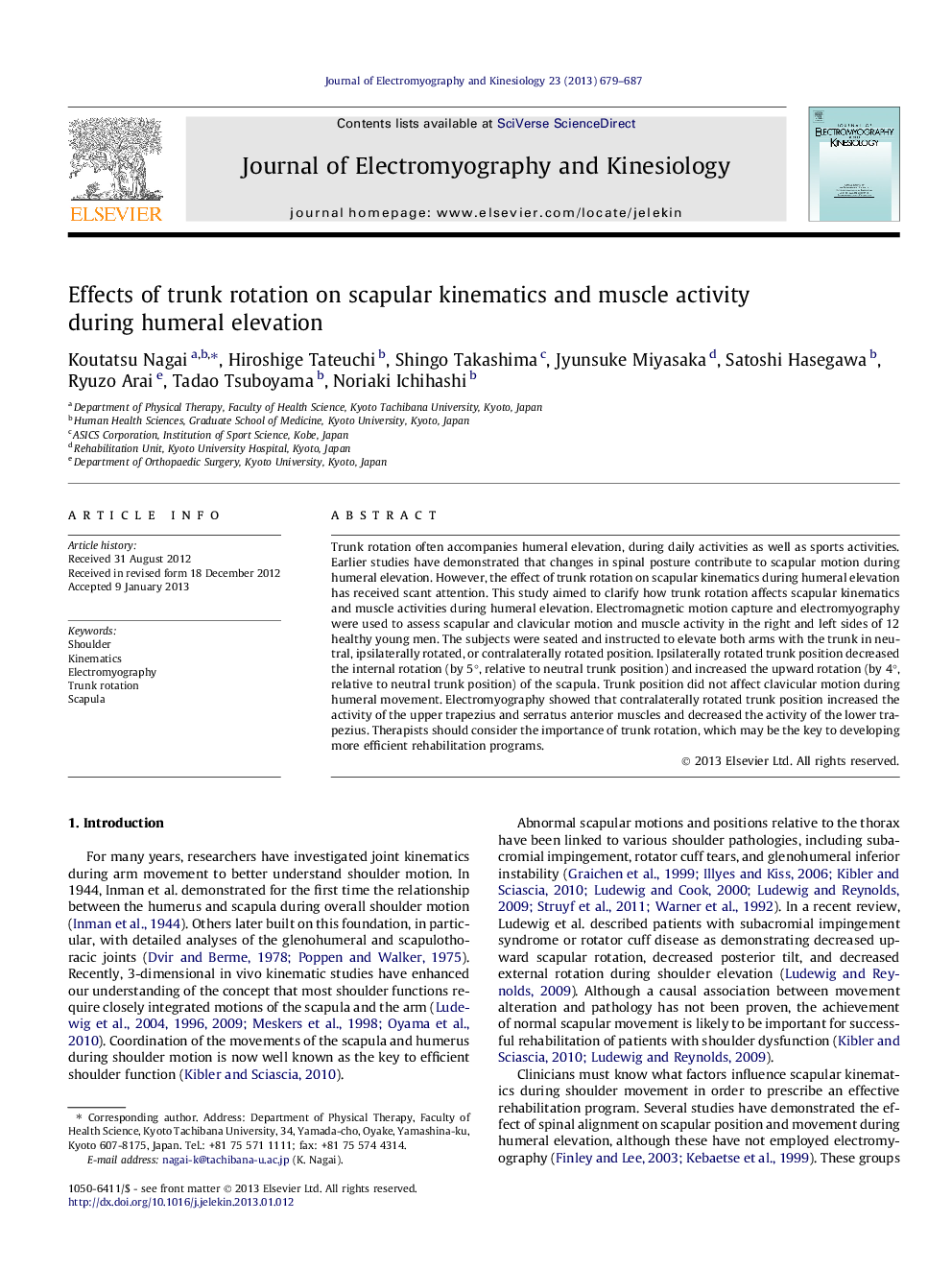| Article ID | Journal | Published Year | Pages | File Type |
|---|---|---|---|---|
| 4064786 | Journal of Electromyography and Kinesiology | 2013 | 9 Pages |
Trunk rotation often accompanies humeral elevation, during daily activities as well as sports activities. Earlier studies have demonstrated that changes in spinal posture contribute to scapular motion during humeral elevation. However, the effect of trunk rotation on scapular kinematics during humeral elevation has received scant attention. This study aimed to clarify how trunk rotation affects scapular kinematics and muscle activities during humeral elevation. Electromagnetic motion capture and electromyography were used to assess scapular and clavicular motion and muscle activity in the right and left sides of 12 healthy young men. The subjects were seated and instructed to elevate both arms with the trunk in neutral, ipsilaterally rotated, or contralaterally rotated position. Ipsilaterally rotated trunk position decreased the internal rotation (by 5°, relative to neutral trunk position) and increased the upward rotation (by 4°, relative to neutral trunk position) of the scapula. Trunk position did not affect clavicular motion during humeral movement. Electromyography showed that contralaterally rotated trunk position increased the activity of the upper trapezius and serratus anterior muscles and decreased the activity of the lower trapezius. Therapists should consider the importance of trunk rotation, which may be the key to developing more efficient rehabilitation programs.
